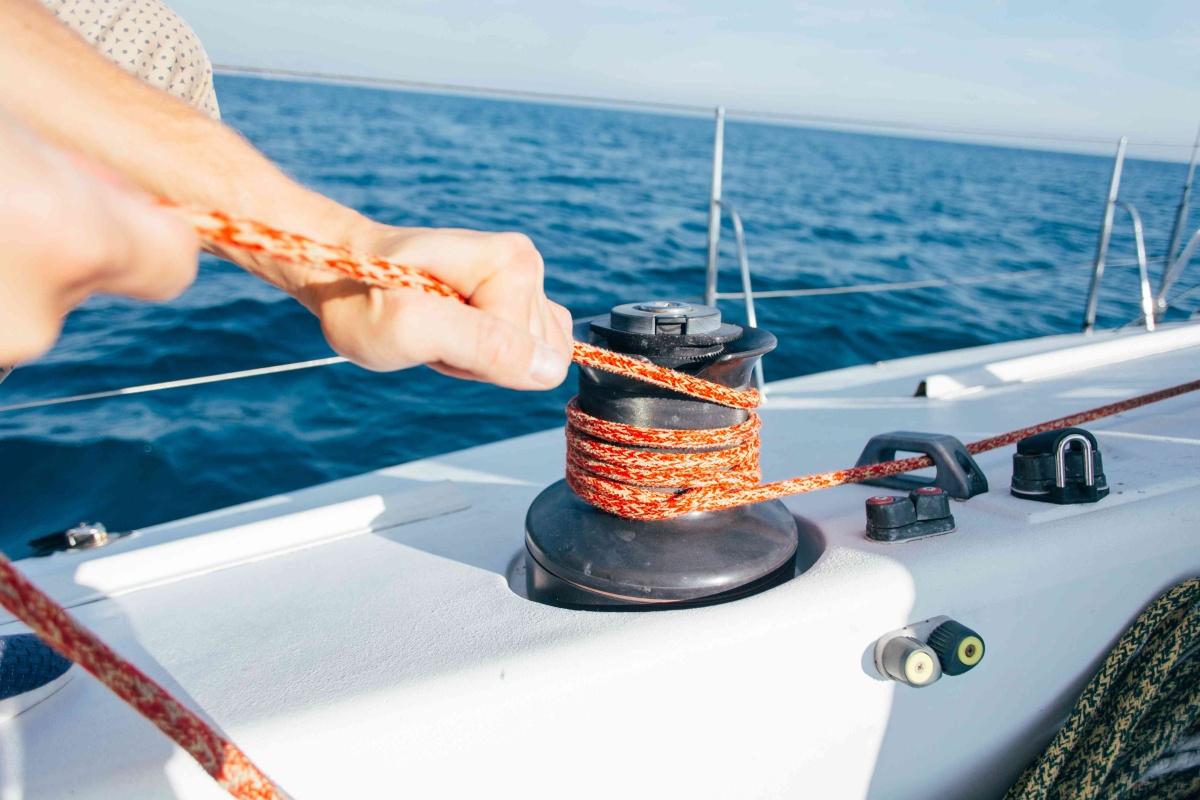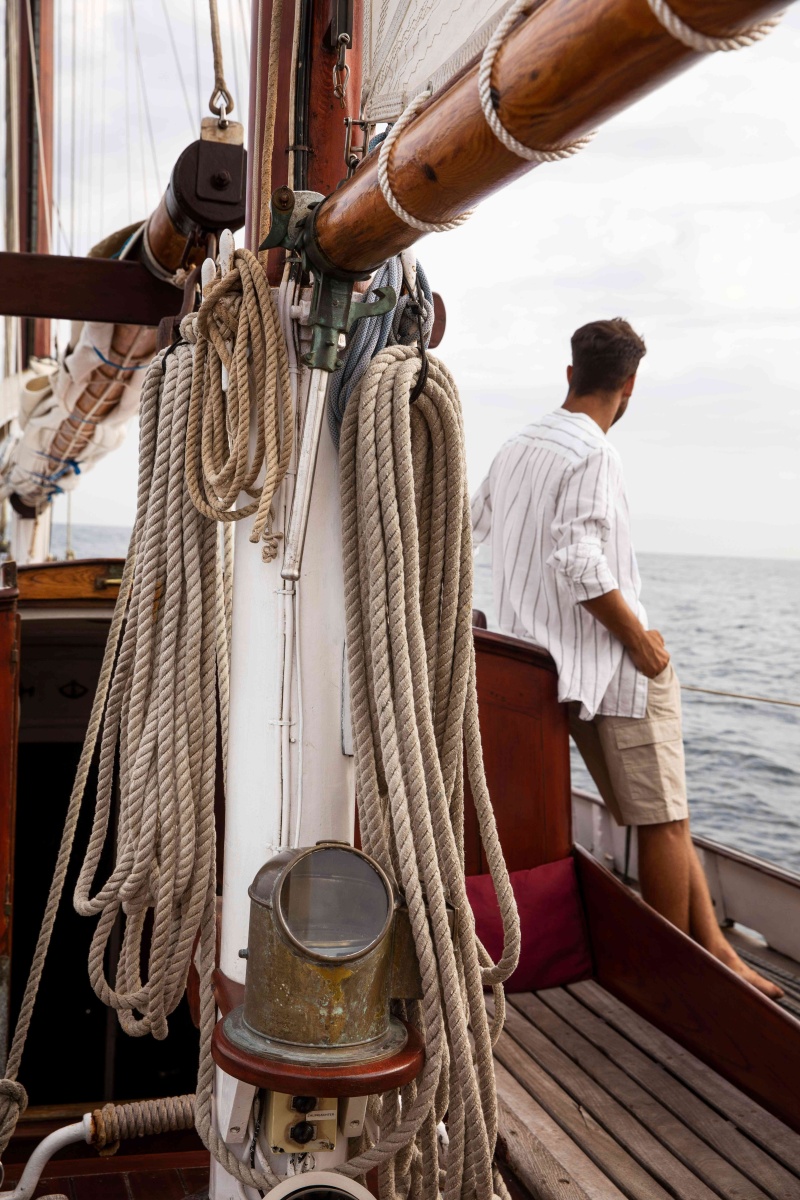Marine ropes, with their elegant weaves and vibrant hues, possess a utilitarian function while simultaneously captivating the eye. They adorn the ship's railings on the deck, grace the aluminium shore gangways as you ascend aboard, and serve as the cord (bell-rope) for the ship's bell. Their visual allure is undeniable, but it is in their practical applications that they truly shine, both on land and at sea.
These ropes showcase their full potential during various operations that demand strength, reliability, and durability. Whether it be towing mighty ships, moving heavy equipment, or executing daring rescue missions, robust ropes are an indispensable necessity. But let us venture deeper into the realm of marine ropes, where their true essence unfolds.
What are marine ropes used for?
Their tasks are diverse and essential, encompassing a wide range of functions both on and off the vessel. Consider the following key roles they play:- Mooring: Ropes secure ships to berths or buoys.
- Towing of other ships, guiding vessels to their destinations.
- Anchoring: Lifting, lowering or holding anchors or anchor chains;
- Cargo Handling: Facilitate the unloading and loading of goods, as well as the lifting and movement of cargo or equipment.
- Sail Control: Adjust the tension of sails
- Safety Assurance: On deck, ropes serve as barriers and fences to protect the crew and passengers from harm.
- Rescue Operations: These ropes become lifelines, capable of lifting and saving lives when accidents befall.
- Fishing: Help to catch fish.

Main characteristics of ropes
As we continue our voyage into the realm of marine ropes, let us delve into the essential features and characteristics that shape their very essence.Various types of ropes are created and used to perform specific tasks, and even their structure is determined depending on the functions that this or that rope will perform.
Here are just some of the key features that you should definitely know and understand. And these characteristics rather embody the general requirements for ropes, regardless of type:
- Strength and Load Capacity: The backbone of any rope lies in its strength, allowing it to withstand tremendous loads. Thanks to the wonders of modern materials like nylon, polyester, polypropylene, or their blends, synthetic ropes boast superior tensile strength compared to the natural fibre ropes once favored by ancient sailors.
- Shock Absorption: Ropes must possess the remarkable ability to absorb sudden shocks and jolts. For example, during towing, this will help prevent damage to both the towing and the towed vessel.
- Abrasion Resistance: In the relentless marine environment, ropes inevitably encounter abrasive surfaces such as jagged rocks and rough hulls. Ropes with exceptional abrasion resistance are essential to maintain their integrity and longevity.
- Buoyancy: The buoyancy of ropes proves vital, facilitating smoother lifting operations while minimizing entanglements between various underwater objects.
- UV Resistance: Endless days spent basking under the sun's radiant gaze can take a toll on ropes. The relentless assault of UV radiation gradually weakens their resilience. Opting for UV-resistant materials ensures durability, safeguarding against premature wear and tear.
- Flexibility and Ease of Handling: The allure of ropes lies not only in their strength but also in their graceful flexibility and ease of handling. They must effortlessly bend and twist, allowing seafarers to navigate their duties with fluidity, while still retaining their core strength.

How to find the perfect strand?
There are several factors to consider when selecting marine ropes to ensure optimum performance and safety:- Working Load Limit: Determine the maximum load that your rope will bear and select a rope with an appropriate working load limit, aligning with the demands of your maritime endeavors.
- Environmental Conditions: Consider the unique environmental conditions that your rope will encounter. Factors such as temperature fluctuations, exposure to saltwater, UV intensity, and humidity all leave their mark. Each rope's durability is tested amidst the elements. While steel ropes boast exceptional strength for lifting heavy loads, the corrosive influence of moisture and proximity to water eventually takes its toll. In contrast, modern synthetic fibers exhibit a remarkable resistance to such vulnerabilities, although not all may match the tensile strength of their steel counterparts.
- Length and Diameter: The length and diameter of a rope play a crucial role in selecting the appropriate strand for your desired application. For instance, a synthetic polypropylene, 8-strand rope with a diameter ranging from 32 to 104 mm elegantly secures a vessel to its berth or the side of another ship. On the other hand, towing may necessitate a 12-strand, an ultra-high molecular weight polyethylene (UHMW PE) fibre, tailored to meet the demands of the task at hand. Remember, thicker ropes provide heightened strength, while length affects their weight.
- Regulatory Compliance: In the vast oceanic realm, adherence to industry codes and standards is paramount. By selecting ropes that align with these norms, you not only bolster operational efficiency and desired outcomes but also ensure a smooth passage with regulatory authorities.
The significance of ropes in the seamless functioning of seaports cannot be overstated. These essential tools have become indispensable in the maritime industry, alleviating the arduous tasks faced by countless individuals while optimizing the allocation of resources, finances, and time. Understanding their core characteristics, diverse types, and multifaceted applications is the key to unlocking their full potential.
When selecting the appropriate rope, it is imperative to diligently assess its capabilities and suitability for specific usage conditions. Each variant of rope possesses its own unique attributes, combining strength, durability, flexibility, and an unparalleled capacity to bear substantial loads.
Let us guide you on this captivating journey as our experts assist you in finding the marine rope that perfectly befits your needs!






